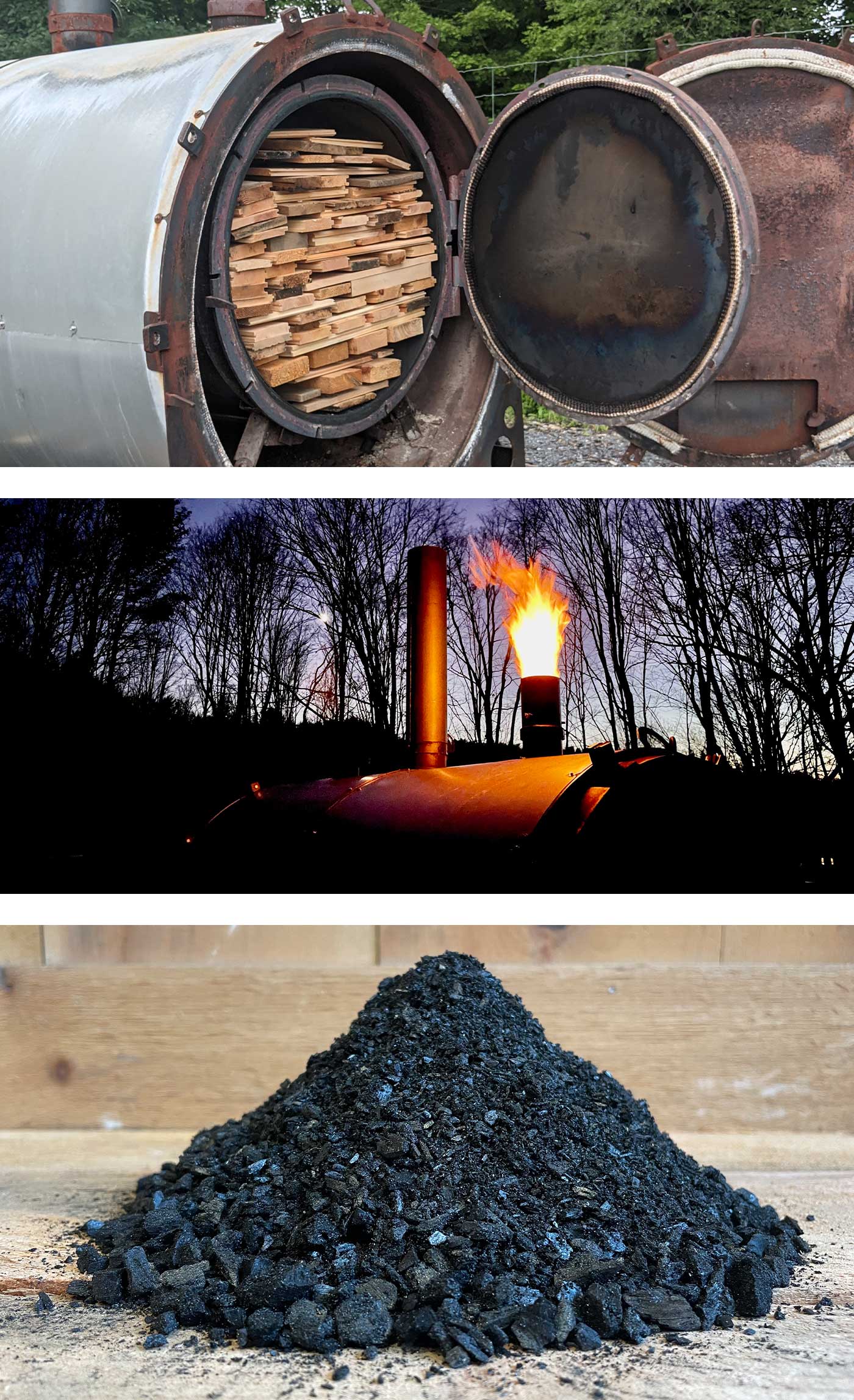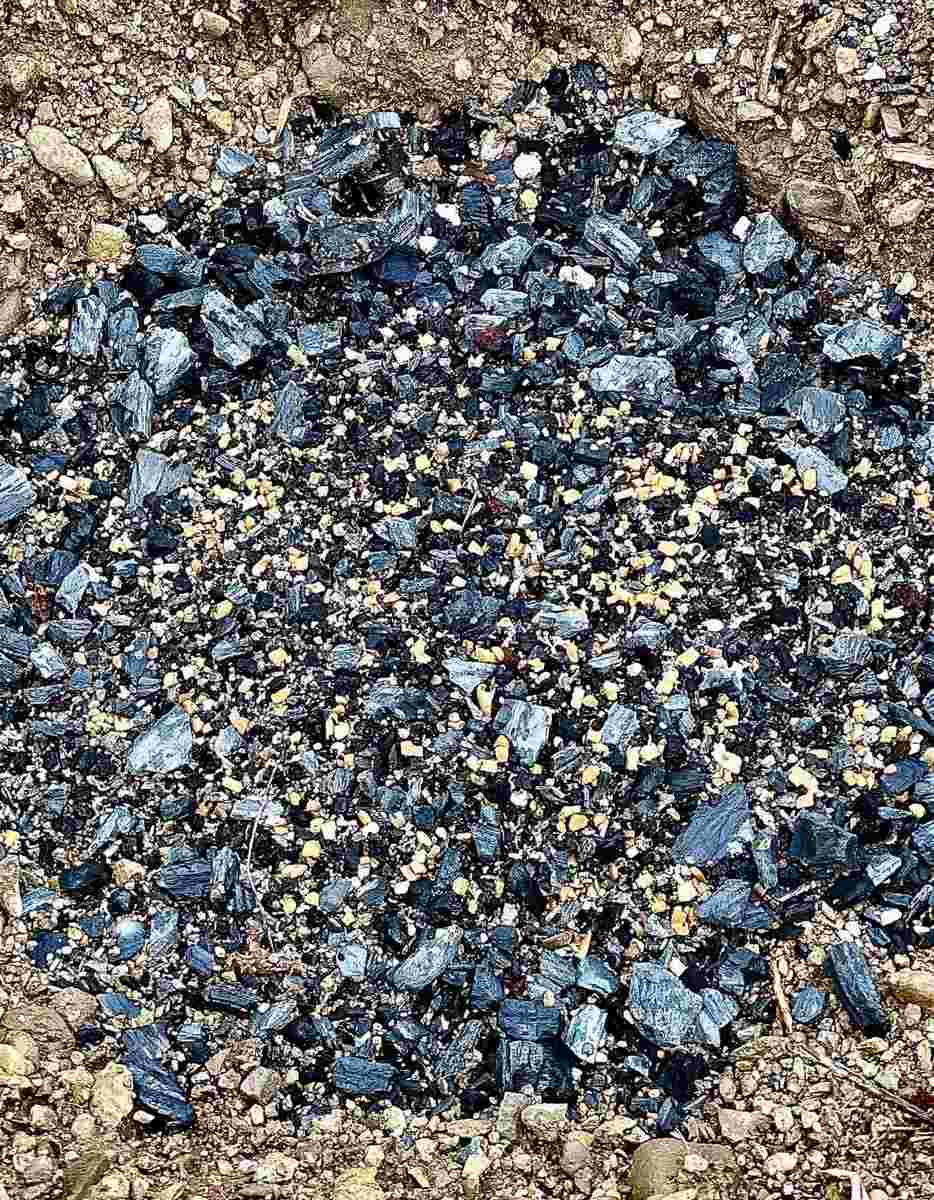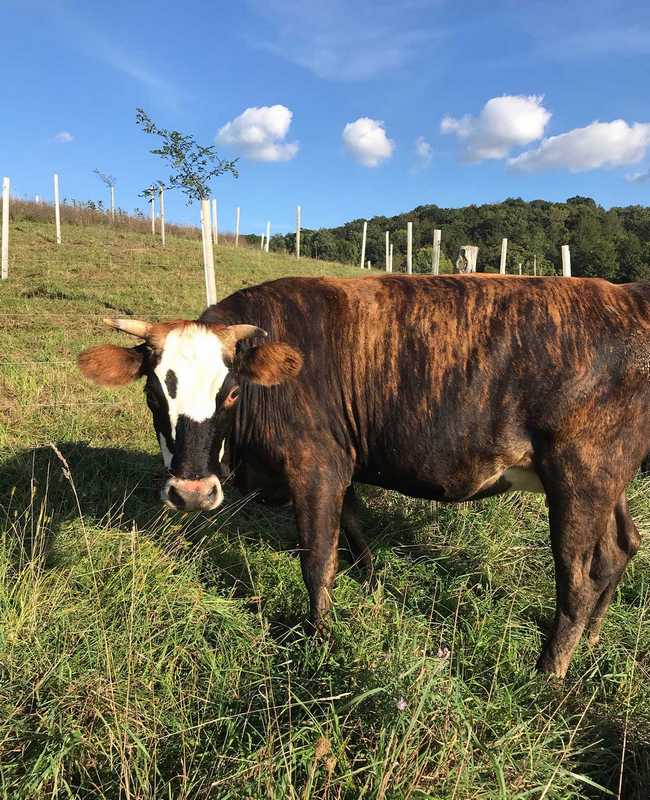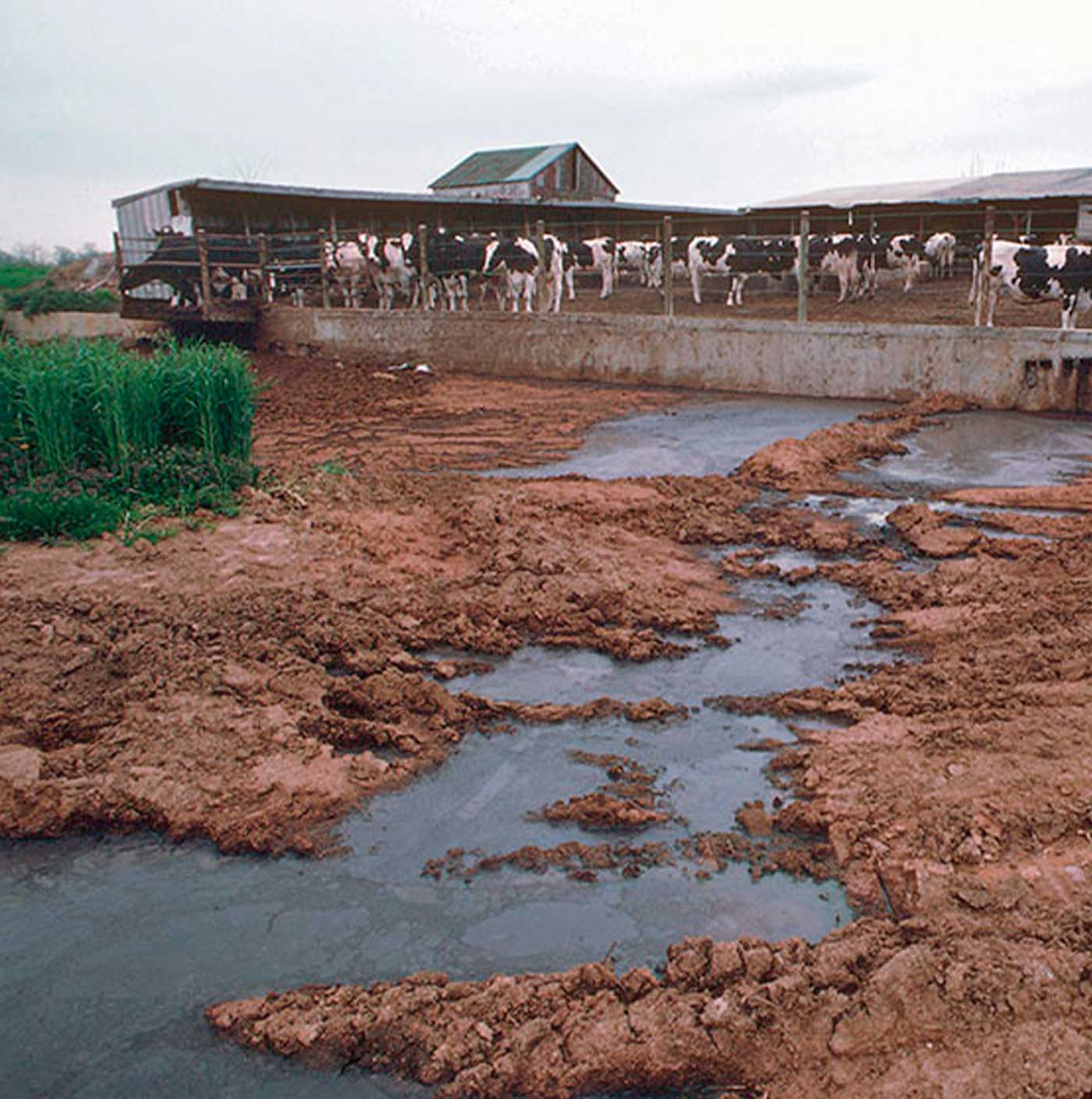Biochar

What is Biochar?
Biochar is made by heating biomass in the absence of oxygen – a process known as pyrolysis. This produces a highly porous and durable form of carbon that provides habitat for beneficial soil microbes that support vigorous and healthy plants.
Inoculating, or “charging” biochar with hot compost or a microbial amendment is essential prior to adding it to the soil. Biochar also enhances soil structure and water-holding capacity, particularly in sandy or depleted soils.
Biochar contains about half of the carbon and one-third of the mass of the original biomass feedstock, making it ideal for sequestering carbon back into the soil as a natural climate solution. The surplus energy produced from the biomass during its conversion to biochar also can be used to offset the use of fossil fuels for heat or power.
Used as an animal feed supplement, biochar can promote digestive health and animal growth. It can filter harmful toxins and nutrients leaching from manure lagoons into local waterways, helping farmers improve manure management while also creating a valuable inoculated biochar-manure mix ready for field application or composting.

Rekindling Ancient Farming Practices
Biochar has been used in agriculture for thousands of years, dating back to pre-Columbian Amazonians, Australian Aborigines, and Neolithic Europeans. The Roman historian, Cato the Elder (234-149 BC), prescribed biochar as a treatment for digestive maladies in oxen. Neolithic Europeans enhanced poor soils by using sod from marginal lands as animal bedding, adding char and ash to capture the nutritious animal wastes, and then applying it back to the fields in the spring. Evidence of this process, called “plaggen” can be seen today in areas with enriched soils as much as four feet deep, called “plaggenesch.” In Japan, the use of charcoal for cooking fuel, ceramic firing, and water purification extends back millennia. Amending the soil with biochar made from rice husks and other agricultural residues was also common.
Aboriginal Australians deposited domestic debris – including char, bones, shells, and clay – in mounds around their settlements for many generations, resulting in soil, classified as “cumulic anthroposol,” which contains significantly higher organic carbon than neighboring lands. Perhaps the best known example of carbon-rich anthropogenic soils are found in the Amazon, referred to as “terra preta,” or “dark earth.” Over 150 years ago, meters-deep deposits of this mysterious black earth were discovered among tropical soils that typically lack significant carbon content and fertility. As Charles Mann reports, terra pretta “has more ‘plant available’ phosphorus, calcium, sulfur, and nitrogen than is common in the rainforest; it also has much more organic matter, better retains moisture and nutrients, and is not rapidly exhausted by agricultural use when managed well.”
North American agricultural journals from the 19th and early 20th century frequently discussed charcoal as a key input for soil health and animal wellbeing. But, farmers’ use of biochar waned with the adoption of synthetic fertilizers and pharmaceuticals throughout the 20th century. Over the past few decades we have come to understand that indigenous cultures used biochar to enrich soils, and that some of these intentional carbon deposits have persisted in a stable form for thousands of years. As a result, the production and use of biochar has reemerged as a tool for enhancing the fertility and microbial life of the soil, for improving animal digestion and reducing toxins in feed, for controlling pollution, and for drawing carbon out of the atmosphere and sequestering it back into the earth.
Building Soil Habitat for Key Microbes
Biochar’s porous structure, extensive surface area, and absorptive and adsorptive qualities allow water and micronutrients to saturate and adhere to its structure. This creates habitat for microorganisms like mycorrhizal fungi and beneficial bacteria that help with plant nutrient availability, which can be particularly useful in depleted or sandy soils with low soil organic matter.
Certain biochars with high alkalinity typical of high temperature gasification processes can help raise the pH of acidic soils similar to the effect of lime. Biochar from woody biomass produced through a slower pyrolytic process like we use at Arthur’s Point Farm can maintain a more balanced pH in the soil.
Biochar has been found to increase crop productivity between 18-28% across different studies. Additional research is needed to define optimal treatment regimens for enhancing the productivity of different crops with biochar given variability in soils, biochar feedstock, and production and inoculation methods.


Carbon Capture and Biochar
Trees and other plants pull carbon dioxide from the atmosphere, where most of it stays until the living biomass is burned or decomposes. A portion of that carbon is transferred into the soil through plant roots and decayed matter. This makes forests and soils natural carbon sinks in our fight to reduce the build-up of greenhouse gases in the atmosphere.
Deforestation, prevailing agricultural practices, and other land-use changes currently emit more greenhouse gases than the earth can reabsorb, leading to a net increase in harmful atmospheric emissions on top of the greenhouse gases emitted from fossil fuels. Reforestation, improved agricultural practices, and the use of biochar can reverse these trends. Converting plant biomass into biochar captures a stable form of carbon from plant biomass that can be sequestered in the soil for thousands of years. The conversion process also creates clean surplus energy that can be used for heat and power for greenhouses, mills, and other industrial facilities, further reducing our reliance on fossil fuels. Poor soil management practices, like the addition of synthetic and organic fertilizers, continuous tillage, the lack of cover crops, manure management, and the burning of agricultural residues are responsible for nearly 80% of all nitrous oxide (NO2) emissions in the U.S. NO2 is 300 times more potent than carbon dioxide at trapping warming radiation in the atmosphere. The use of biochar has been shown to reduce nitrous oxide emissions from soil by more than one-third.
Helping Animals Live Healthier
The use of biochar as a feed supplement for livestock has grown considerably over the past decade in Germany, Switzerland, Austria and other mainly European countries given its demonstrated ability to improve nutrient intake efficiency, adsorb toxins, and improve the overall health of the animals.
Biochar can also significantly reduce toxins present in feed, bacterial pathogens from the body, and reduce the uptake of environmental toxins, pesticides, insecticides, and herbicides found in genetically-modified feed crops.
Biochar feed supplements have been observed to increase weight gain and feed efficiency, improve egg production and quality in poultry, strengthen immunity, improve barn hygiene and odor pollution, and reduce veterinary costs. The increased popularity of biochar as a feed supplement led the European Biochar Foundation to publish a certification standard for animal feed in 2018.


Preventing Farm Waste, Creating Fertilizer
Many of the same qualities that make biochar a valuable input for increasing fertility are also beneficial for managing agricultural wastes like manure lagoons When mixed with manure, biochar’s high cation exchange capacity and overall surface area is highly efficient at binding ammonia and other malodorous substances.
Moreover, the adsorptive (i.e., adhering) and absorptive (i.e., dissolving) qualities of biochar reduce nutrient leaching in the soil, which protects groundwater and lowers acidification of the soil, and is reported to nearly double the fertilizer efficiency of liquid manure treatments.

